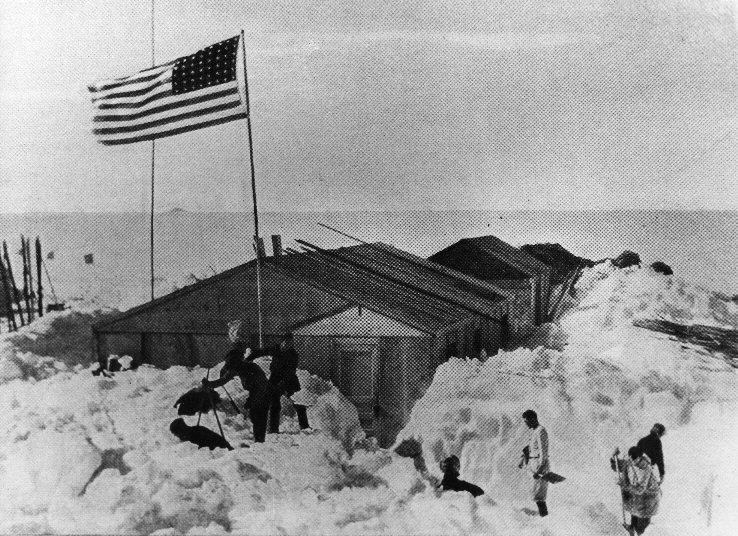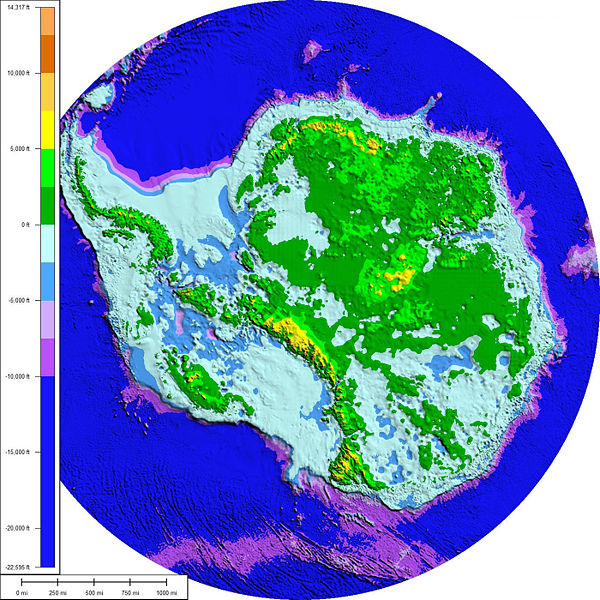— Ultra high quality scans of the mysterious Gamburtsev Subglacial Mountains in Antarctica this past week revealed detailed images of the mountain range extending into the depths below 2.5miles of ice surrounded by not only valleys but lakes of unfrozen water. While the geological survey of this region had been done in the 70’s, these scans utilizing new imaging technology available to the National Science Foundation have revealed amazing details never seen before.
I was given the opportunity to interview one of the graduate students of Columbia University being considered for the expedition to survey the Gamburtsev region. J.W. Dyer, grandson of the now infamous William Dyer, was excited about the possibility of getting picked to go. He stated, “I hope to get the chance to go study the areas where my grandfather stepped foot over 70 years ago… the modern technology at our disposal will help clear up any misunderstanding or myths that have arisen regarding the fate of the Pabodie expedition.” When asked what he hoped to find in the region Dyer replied, “The best thing I could hope for is to help in the discovery of the geological forces that caused ice to form there in the first place.. .. that would be history in the making.”

Credit: Propnomicon
The Pabodie expedition, mentioned by Dyer in our interview, took place in 1930-31 during which nearly all members were lost. The surviving members were later diagnosed as clinically insane due to their wild stories of monsters and demons. It was later suggested that malnutrition and dehydration may have been a substantial catalyst for the paranoid delusions. William Dyer’s journal was partially recovered, but was fraught with ineligible scribblings, illustrations, and allusions to unintelligible musings throughout and indicating to later physicians the possibility of pre-existing schizophrenia. Several contemporary novelists at that time capitalized off the sensational nature of the expedition story and over the past 70 years a mythos has developed around the occurrences.
While talking to Dyer I got the sense that he was really ready to “clear his family name” of the past misunderstanding. As such, Dyer is desperately hoping to be officially included in the expeditionary team but will not find out for a couple weeks. In the mean time he went over some of the more interesting parts of the new imagery, explained what some of it is, and discussed what the National Science Foundation is hoping to find in this mysterious mountain range.

Credit: European Ice Sheet Modelling Initiative, Scientific Committee on Antarctic Research
Under the miles of ice and far down in the valleys formed at the base of these covered mountains are several open lakes. One lake, now designated “Poor Lake”, within the Gamburtsev region was peculiar in that the scans have revealed naturally formed geometric structures such as cubes and cones of varying densities, currently thought to be of crystalline formation, near the lake but covering a several mile wide area. Though Poor Lake is under more than 2.5miles of solid ice, the area has remained unfrozen. The scan even revealed a light rippling on the water the source of which is unknown. Dyer explained that speculation has arisen as to whether this warmer region could be caused by volcanic activity in a pocket or cavern deep beneath the Antarctic crust.
Another area of interest Dyer described as containing several shapes that could prove to be organic in nature. Though little detail was given, the image referenced seemed to indicate several plant like densities in patterns described as roughly “star shaped” though no images have yet been made public. The area also had a major degradation in the mountain side near these star-shaped areas indicating a collapse having happened relatively recently in comparison to the prehistoric surrounding surfaces. This could indicate an unstable geological region which would explain a multitude of newly arising questions regarding the origin of the continent and its massive ice sheet.
Dyer says he’s so excited about the possibility of getting to go that he’s begun having dreams about the expedition nearly every night. For his sake, I hope his dreams come true as it could be the adventure of a lifetime, definitely an opportunity not to be shrugged off. Perhaps in the near future Dyer will get the opportunity to dispel the myths of his grandfather and, by proxy, outshine his elder’s things.
Credit: Live Science; Varied Source Addendum
This has been all over those documentary shows lately, but it’s hard to buy. . . seems like the archival information should have lasted better than it did, especially since we’re only talking about 80 years. We have more information about Tut’s tomb than we do about Pabodie.
And the whole albino penguin thing creeps me out.
Of all things, the blind cave penguins creeped you out? JD (J. Dyer) called me back and said he did get accepted. He’s going to send me video upload of Antarctica if he can. Definite post.
I don’t know, I think it’s left over from Mary Poppins or something. . . since when do my quirks make sense?
Did some googling after I read this–do you know MU is totally not acknowledging the Columbia expedition? Zero press; it’s like they’re pretending it doesn’t exist. Of course, MU’s always been weird about Pabodie.
Pabodie wasn’t from New York, Ali. He was from Massachusetts in 1930. That said, the current encampment is AGAP. You should be able to find the info on that in the news. JD sent me a short video and some more updates. I’ll see if I can get them coherently posted here soon.